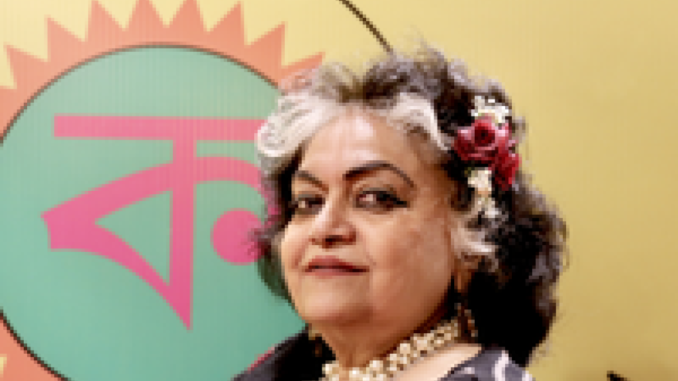
New Delhi, February 15 (IANS) Art historian and curator Dr Alka Pande has written a set of 14 collectable books titled ‘108 Portraits of Indian Culture and Heritage’ that puts the spotlight on 14 disciplines ranging from art, architecture, objects, crafts and more. The immersive collection set is an encyclopedic work looking at the development and history of Indian visual culture through various eras of history to the contemporary world.
Complete with anecdotal personal stories, the author has employed the lens of Indian art and aesthetics to unpack the rich cultural history of the country’s illuminating art, architecture and cultural landscape. The subject of each book unfolds in a visual and textual story of 108 narratives. Since the number 108 is of immense significance in Indian art and it also emerges from the Upanishadic tradition of Indian philosophy, it has emerged as a connecting thread among the set of books through which images and histories of the subject engage with each other.
The set of books features historical, cultural and visual exploration of subjects ranging from Objects, Dance, Food, Architecture, Printmaking, Crafts and Music to Photography, Sculpture, Design, Traditional Art, Textiles, Modern and Contemporary Art and Vernacular and Indigenous Art.
Each book begins with a personal story by the author who reflects on how her childhood impressions and exposure have been pivotal in introducing her to the rich and myriad cultures of India. She reminiscences about her first brush with ‘kumhaars’ (potters) at her maternal grandmother’s house in Meerut in the ‘108 Portraits of Indian Crafts’ book which soon delves deeper into the beauty of glazed pottery of the Indus Valley Civilisation and eventually takes readers through the craftsmanship of varied Indian states.
In the book ‘108 Portraits of Indian Objects’, the author delves into the designs of utilitarian objects and examines how they are both functional and pieces of aesthetic art. The ubiquitous pot or ‘lota’ is a recurring motif in this book.
The cultural significance of food in the form of prasad, customs or rituals is documented in ‘108 Portraits of Indian Food’. The reader is taken through a journey of food in literature, and painting before taking a deep dive into examining the broader culture of food across the globe. Archaeology of raw and cooked food is looked at, and the reader gets inside the heart of royal kitchens and regional Indian cuisines before illuminating the modern version of fusion cuisines.
Indian textiles have a long, rich and layered history. The reader is taken on a fascinating exploration of the complex warp and weft techniques in ‘108 Portraits of Indian Textiles’ but also delineates costume styles. Finer points of draped clothing and the stitched costumes of stylish ‘chooridars’ and Mughal angrakhas, luxurious silks and cotton, natural pigments and dyes, brocades and zardozi, complemented with a finely curated selection of visuals of ancient sculptures, paintings and textiles are discussed.
In ‘108 Portraits of Indian Music’, various styles including the contributions of Amir Khusro to qawwali; Swami Haridas and Tansen to dhrupad; ancient Sanskrit and Tamil treatises, Purandaradasa, and the renowned “Trinity” to Carnatic music; Pandit Bhatkhande’s treatise on Hindustani classical music; and Rabindra Sangeet are discussed. This fascinating story is richly complemented by descriptions and images of performers and instruments.
“Indian culture and heritage are vast, diverse, and deeply rooted in history, spirituality, traditions, and art forms. Attempting to encapsulate the entirety of Indian culture within a single book has indeed been a monumental task. But it has equally been enriching to see how the set of 14 books encapsulates the enriching historical and contemporary journey of each discipline succinctly. This set of books is my humble attempt to create an encyclopedia for each discipline to help readers understand the development of a particular subject from its beginning to the present,” says the author who was at the recently held Apeejay Kolkata Literary Festival.
Additionally, each book comes with a takeaway –it could be in the form of a recipe (Food), a masterclass in making your jama (Textile) or an insightful read on different types of aipan and creating your own (Traditional Art). The idea of including these nuggets of information and activities at the end of each book is to drive engagement and learning.
The books have been published by the Artshila Trust and will be launched on February 18.
—IANS/
sukant/kvd
Leave a Reply